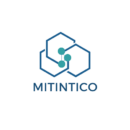”
Key Takeaways
- Integration of Advanced Technologies: Hi-tech packaging combines smart technologies and advanced materials to enhance product functionality and appeal, improving consumer experiences.
- Focus on Sustainability: Eco-friendly materials, such as biodegradable plastics and recycled materials, are central to hi-tech packaging, appealing to environmentally conscious consumers.
- Enhanced Safety Features: Smart packaging includes sensors and indicators that monitor freshness and safety, reducing spoilage and enhancing product longevity.
- Increased Consumer Engagement: Interactive elements like QR codes and visually appealing designs foster stronger connections between brands and consumers, influencing purchasing decisions.
- Challenges to Consider: Cost implications and difficulties in technology adoption are significant barriers that companies must navigate while implementing hi-tech packaging solutions.
- Competitive Advantage: Companies utilizing hi-tech packaging not only improve product safety and shelf life but also distinguish themselves in the marketplace, attracting a broader range of consumers.
In a world driven by innovation, hi-tech packaging is revolutionizing how products are presented and preserved. This cutting-edge approach combines advanced materials and smart technologies to enhance not only the aesthetic appeal but also the functionality of packaging. From biodegradable options to interactive designs, hi-tech packaging is reshaping consumer experiences and expectations.
As sustainability becomes a priority for brands and consumers alike, the shift towards intelligent packaging solutions is more important than ever. These innovations not only protect products but also provide valuable information about freshness and usage, ensuring that consumers engage with products in new and meaningful ways. Embracing hi-tech packaging is no longer just a trend; it’s essential for companies aiming to stand out in a competitive market.
Hi Tech Packaging
 Hi-tech packaging utilizes advanced materials and innovative technologies to improve both product preservation and presentation. Enhanced visual appeal attracts consumer attention, while cutting-edge functionality increases the usability and longevity of various products.
Hi-tech packaging utilizes advanced materials and innovative technologies to improve both product preservation and presentation. Enhanced visual appeal attracts consumer attention, while cutting-edge functionality increases the usability and longevity of various products.
Smart packaging features incorporate sensors and indicators. These elements provide real-time information regarding freshness and product conditions. For instance, temperature-sensitive labels change color as food products reach unsafe temperatures. Such technology helps prevent spoilage and ensures consumer safety.
Sustainability plays a significant role in hi-tech packaging development. Many companies prioritize eco-friendly materials, reducing environmental impact. Biodegradable plastics and recycled materials represent common examples of sustainable packaging options.
Enhanced convenience emerges through user-friendly designs. Easy-open seals and resealable packages improve consumer experiences, making products more accessible. This focus on convenience often leads to increased brand loyalty.
Companies embracing hi-tech packaging stand out in the competitive market. By combining aesthetics with functionality and sustainability, firms appeal to a wider range of consumers while addressing modern demands.
Types Of Hi Tech Packaging
Hi-tech packaging encompasses several forms, each with unique features and benefits. Key types include smart packaging, active packaging, and sustainable packaging.
Smart Packaging
Smart packaging incorporates sensors and indicators that monitor product conditions in real time. For example, temperature sensors track perishable items, while freshness indicators signal when products are no longer safe to consume. This technology enhances consumer safety and optimizes inventory management by reducing waste and spoilage. Smart packaging often integrates with mobile devices, allowing consumers to access information about product usage and freshness directly.
Active Packaging
Active packaging interacts with the product to extend shelf life and maintain quality. Common elements include oxygen scavengers and moisture absorbers that control the internal environment of a package. For instance, oxygen scavengers reduce oxidation, thereby preserving flavors and preventing spoilage. Active packaging enhances product longevity and delivers a better user experience, ultimately contributing to brand loyalty by ensuring that consumers receive products in optimal condition.
Sustainable Packaging
Sustainable packaging prioritizes environmental responsibility through the use of eco-friendly materials and practices. Companies increasingly adopt biodegradable plastics, recycled paper, and compostable materials to reduce waste. For example, packaging made from plant-based materials can decompose more efficiently than traditional plastics, minimizing landfill impact. Sustainable packaging not only appeals to eco-conscious consumers, but it also aligns with global initiatives to reduce carbon footprints, enhancing corporate social responsibility.
Benefits Of Hi Tech Packaging
Hi-tech packaging offers numerous advantages that significantly impact product safety, shelf life, and consumer engagement. These benefits enhance both functionality and marketability, making them essential in today’s competitive landscape.
Enhanced Product Safety
Enhanced product safety results from integrated smart technologies that monitor conditions throughout the supply chain. Sensors detect temperature variations, humidity levels, and physical damage, enabling immediate actions to prevent spoilage. Real-time tracking systems allow manufacturers and consumers to monitor products, ensuring safety and quality. For example, smart labels can change color to indicate spoilage, directly informing consumers about the product’s status and reducing the risk of foodborne illnesses.
Improved Shelf Life
Improved shelf life arises from advanced packaging techniques that interact with products to maintain their quality. Active packaging employs elements like oxygen scavengers and moisture absorbers, which reduce oxidation and spoilage, extending the usability of perishable items. Research indicates that active packaging can increase shelf life by 20-50%, significantly benefiting food and pharmaceutical sectors. By maintaining freshness longer, companies can reduce waste and enhance customer satisfaction.
Consumer Engagement
Consumer engagement thrives through innovative designs and informative packaging features. Interactive elements, such as QR codes, provide detailed product information, enhancing the shopping experience. Personalized packaging can create a unique connection between brands and consumers, promoting brand loyalty. Furthermore, appealing aesthetics attract attention on shelves, influencing purchasing decisions. For instance, visually striking designs can lead to a 20% increase in sales, reflecting the importance of packaging in consumer behavior.
Challenges In Hi Tech Packaging
 Hi-tech packaging presents several challenges that companies must navigate to fully leverage its benefits. These challenges often revolve around cost implications and technology adoption.
Hi-tech packaging presents several challenges that companies must navigate to fully leverage its benefits. These challenges often revolve around cost implications and technology adoption.
High initial costs frequently accompany the development and implementation of hi-tech packaging solutions. Companies incur expenses related to advanced materials, specialized equipment, and technology integration. For example, smart packaging technologies such as sensors and RFID tags can significantly raise production costs. Some estimates reveal that adopting innovative packaging can increase costs by 10-30%. Smaller businesses may find these expenditures particularly challenging, leading them to hesitate in adopting modern solutions. Additionally, the cost of research and development to create effective and sustainable packaging adds to the financial burden. Companies must carefully evaluate the long-term return on investment when considering hi-tech packaging options to ensure it aligns with their financial capabilities.
Technology Adoption
Technology adoption poses a significant challenge for many organizations. Successfully integrating new packaging technologies requires technical expertise and changes in manufacturing processes. Staff training and development are essential, as employees must understand the features and functionalities of the new systems. For instance, staff must be proficient in using digital tools to monitor product conditions through smart packaging. Resistance to change can hinder progress, particularly within well-established companies accustomed to traditional packaging methods. Furthermore, partnership with technology providers is critical to facilitate implementation and maintenance. Companies may face difficulties in establishing these partnerships, as not all suppliers offer comprehensive support for hi-tech solutions. Streamlining technology adoption becomes crucial for effective implementation and maintaining a competitive edge in the evolving packaging landscape.
Hi-tech packaging is revolutionizing how products are presented and preserved. By integrating advanced materials and smart technologies, businesses can enhance both aesthetics and functionality. This innovation not only attracts consumers but also addresses sustainability concerns, making eco-friendly choices more accessible.
The benefits extend beyond visual appeal to include improved safety and usability. With features like real-time freshness indicators and active packaging solutions, companies can ensure product quality while fostering brand loyalty. As challenges related to cost and technology adoption persist, the commitment to embracing hi-tech packaging remains vital for companies aiming to stand out in today’s competitive landscape. The future of packaging lies in the balance of innovation and sustainability, paving the way for smarter consumer experiences.

